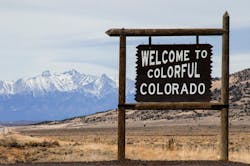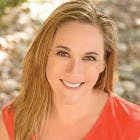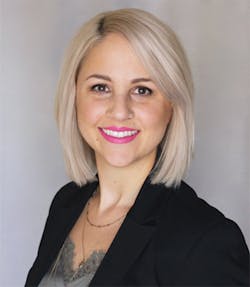Direct access and the dental hygienist: State spotlight, Colorado
Direct-access dental hygiene, which can be defined as a dental hygienist’s ability to provide treatment without the onsite supervision or authorization of a dentist, is developing a key place in the dental industry. This article will look at the state of direct-access dental hygiene in America, as well as a spotlight on the state of Colorado and the practice of independently practicing dental hygienist Angie Rhoades.
Direct access and its variations
In the United States, dental hygienists providing direct access to care have numerous titles and definitions—so many, in fact, that things often become confusing for both practitioners and patients alike. Even though no two states are identical in their definition of direct access, at least 40 states currently authorize dental hygienists to provide direct access in one form or another. It is rare to find two states that give direct-access dental hygienists the same title—thanks in part to legislation that establishes direct-access requirements at the state level.
For example, direct-access dental hygienists in Maine function independently and can practice without influence of a supervising dentist, while other states allow direct-access hygienists to provide services only when under general supervision of and when having a written collaborative agreement with a dentist.
The state-by-state variation of direct-access dental hygiene—and the dental hygiene model in general—not only promotes confusion, it also challenges hygienists’ authority as primary care providers. In many instances, state legislation adds constraints to direct access, such as limiting treatment to underserved patients and restricting the types of services allowed. Some states mandate an oral evaluation by a third-party dentist after a designated period of time in order for a hygienist to continue care.
Direct access and oral health in America
How will direct access be even more significant for the future of dentistry? A recent report by the US Department of Health and Human Services predicts a national shortage of dentists by 2025.1 Creative solutions to mitigate this problem are being discussed at the local, state, and national levels. These solutions aim to impact legislation, increase third-party reimbursement rates, and create entirely new health-care delivery models, such as oral care by a dental therapist.
The problem is that it can take decades to strategize, design, fund, and implement a single solution. What will happen to the state of oral health in America while we wait year after year for these solutions to become viable? It’s an important and challenging question to consider. But direct-access dental hygiene may provide the answer. With simple regulatory changes at the state level, the current dental hygiene workforce of more than 211,000 professionals could easily be the most immediate and effective solution.2 In fact, the Department of Health and Human Services also predicts a national surplus of hygienists by 2025 and suggests that a change to oral health delivery and systems within the existing dental workforce is inevitable.1
Think of this: What if every hygienist had the opportunity to provide care precisely where their patients ate, slept, worked, learned, prayed, and played? What if dental hygienists could provide their current scope to anyone, in any place, and at any time without being restricted by the availability of a dentist? What if eliminating supervision requirements for dental hygienists across all 50 states was the most immediate answer to this country’s poor oral health future? These types of questions highlight numerous creative possibilities. But to be effective, it is imperative that the role and scope of direct-access dental hygienists become more universally understood.
Real stories of direct-access dental hygiene
In order to learn more about the differences in dental hygiene practice across the country, I’ll be interviewing hygienists who are providing variations of direct access and present them here in RDH. Each article will explore the statutes, regulations, opportunities, and limitations that shape direct access in a particular state.
Our first state spotlight is one with the longest tradition of complete dental hygiene independence: Colorado. Since the mid-eighties, dental hygienists in Colorado have pioneered independent hygiene practice. They have had the privilege of working unencumbered and unsupervised. They have even enjoyed the opportunity to own their own dental hygiene practices.
Direct access in Colorado has allowed independent dental hygienists to provide mobile services, rent a space in a traditional dental practice, or form a stand-alone practice. Colorado statutes are some of the surprisingly few to specifically recognize and define the dental hygiene diagnosis.2 A summary of Colorado’s definition of direct-access dental hygiene care can be found in Table 1.
Interview with Colorado independent hygienist Angie Rhoades, BSDH
Angie Rhoades, BSDH, is an independent practice dental hygienist in Colorado and is the owner of SmileLogic, a stand-alone dental hygiene practice. A dental professional since 1993, Angie graduated from Northern Arizona University and has been practicing independently since 2010. Read on to learn about her successes, her struggles, and why she thinks it is critical for dental hygienists to provide direct care to patients.
What inspired you to pursue direct access to care?
Rhoades: Prior to going out on my own, I wasburned out working for dental offices that relied on consultants and unrealistic production goals. Independent dental hygiene practice is great, although you still get the same neck and back pains, scheduling headaches, insurance headaches, and more—the difference is you get the choice on how to handle it.
Why is it important for dental hygienists to provide direct care to patients?
Rhoades: Patients often create their own barriers to care, so being able to provide a service that changes patients’ perspectives is helpful.
For instance, someone may have insurance but is afraid to step inside a dental office. The same is true with patients who have financial barriers. I provide affordable services, and my recommendations are based on individual patients—not practice production goals.
What has been the most effective way to build a patient base?
Rhoades: I advertise through word of mouth, internet referrals, social media, being active in the community and chamber of commerce, and at health fairs.
How does reimbursement work?
Rhoades: I bill insurance and Medicaid, and I take private payment as well. Insurance reimbursement is definitely the biggest challenge. Some insurance companies will not recognize a hygienist as the primary provider without billing under a supervising dentist. Some companies will only pay a very small portion of the customary fees. This has been a huge problem for independent dental hygienists in Colorado.
Can you employ other licensed dental professionals?
Rhoades: I can employ hygienists and assistants but cannot employ a dentist.
Are you required to refer a patient to a dentist?
Rhoades: Colorado statutes require referral to a dentist for a dental exam twice a year, but it is up to the patient to comply.
What three tools could you not live without?
Rhoades: I cannot live without my loupes and headlight, the Nomad handheld x-ray system, and Lighthouse 360 communication software.
What is your ultimate professional goal?
Rhoades: I would like to eventually have another hygienist work at SmileLogic as a clinician. That would allow me to concentrate on the business side of dentistry. I would also like to become a provider of onsite services to large corporations.
What community or civic groups have supported you in your journey?
Rhoades: I am a member of the American Dental Hygienists’ Association. I was involved in the association during college and then dropped membership for a while. Once I was in business for myself, I saw the value of a professional membership and the hard work that goes into legislative changes within our profession on state and national levels.
Where do you think you will be in 10 years?
Rhoades: Hopefully I will be working with another dental hygienist who will eventually want to buy out my practice—or at least want to have some of the responsibility in maintaining and managing it. Having my own business has allowed me more flexibility and has provided me time to travel, which is my passion. I am grateful to be able to do that now and not have to wait until retirement. I would also love to continue consulting other hygienists who embark on similar journeys—something I do on the side now.
What advice would you give to someone who wants to begin a similar journey?
Rhoades: I feel like hygienists get wrapped up in their production numbers. As an employee, hygienists see their production numbers and think that they should be earning that amount. That is partly true; however, there is so much overhead involved in business ownership that the hourly production is not what is made in profit. Acquiring new patients is hard and setting up an office is expensive, so you may accrue debt and have to continue working for others before you can be totally on your own.
Is there anything you would change about your current position?
Rhoades: Nothing! I really am happy in my career and thankful for a thriving and successful small business.
Related: Trends in direct access dental hygiene: Vulnerable populations and game-changing 2018 CDT codes (DentistryIQ)
References
1. National and State-Level Projections of Dentists and Dental Hygienists in the U.S., 2012-2025. U.S. Department of Health and Human Services. https://bhw.hrsa.gov/sites/default/files/bhw/nchwa/projections/nationalstatelevelprojectionsdentists.pdf. Published February 2015.
2. Occupational Employment and Wages, May 2017. 29-2021 Dental Hygienists. US Department of Labor Bureau of Labor Statistics website. https://www.bls.gov/oes/current/oes292021.htm. Updated March 30, 2018.
Also by Melissa Turner: The fight for independence
About the Author

Melissa Turner, BASDH, RDHEP, EFDA
Melissa K. Turner, BASDH, RDHEP, EFDA, was honored as a 2024 Marquis Who's Who in America recipient. She is Senior Executive Consultant at Cellerant Consulting Group and spearheads the Cellerant Best of Class Hygiene Awards. She is a founding board member of the American Mobile & Teledentistry Alliance, cochair of the Oral Health Prevention Summit, and serves on the executive board of the Dental AI Association. Known as @thetoothgirl, she is the cofounder of The Denobi Awards and the National Mobile & Teledentistry Conference.


